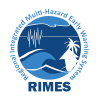Forecast Customization System (FOCUS)
Project Overview
The Forecast Customization System (FOCUS) Tool is a web-based application developed by the Regional Integrated Multi-Hazard Early Warning System (RIMES) to support National Hydrometeorological Services (NMHSs) and other institutions in generating customized monthly to seasonal climate forecasts. By combining multiple climate model outputs into a Multi-Model Ensemble (MME), FOCUS improves forecast reliability and provides both deterministic (single value) and probabilistic (likelihood-based) outputs. This enables users to access climate information that is both scientifically robust and operationally practical for decision-making. By making advanced seasonal forecasting methods accessible and easy to use, FOCUS supports evidence-based decisions that enhance resilience to weather and climate risks. FOCUS represents RIMES’ commitment to strengthening the capacity of NMHSs and partners in delivering actionable climate services.
Key Features
- Multi-Model Ensemble Forecasting: Brings together data from several global climate models, improving skill and reliability compared to single-model forecasts.
- Probabilistic and Deterministic Outputs: Offers flexibility in communicating forecasts, from clear single-value results to probabilities that capture uncertainty.
- Web-Based and User-Friendly: A fully online platform designed for easy access and operation, even in low-resource settings.
- Integration of AI/ML: Uses RIMES-developed artificial intelligence and machine learning techniques to complement global models and enhance regional accuracy.
- Verification and Performance Tools: Built-in modules for forecast verification allow users to assess skill, accuracy, and confidence in the outputs.
- Efficient Processing: Produces seasonal forecasts within minutes, significantly faster than conventional forecasting systems.
Benefits for Users
- Provides timely and reliable climate outlooks (1–6 months ahead).
- Supports anticipatory planning in agriculture, water resources, disaster risk management, health, and other sectors.
- Reduces the technical and computational barriers for NMHSs to run seasonal forecast systems.



